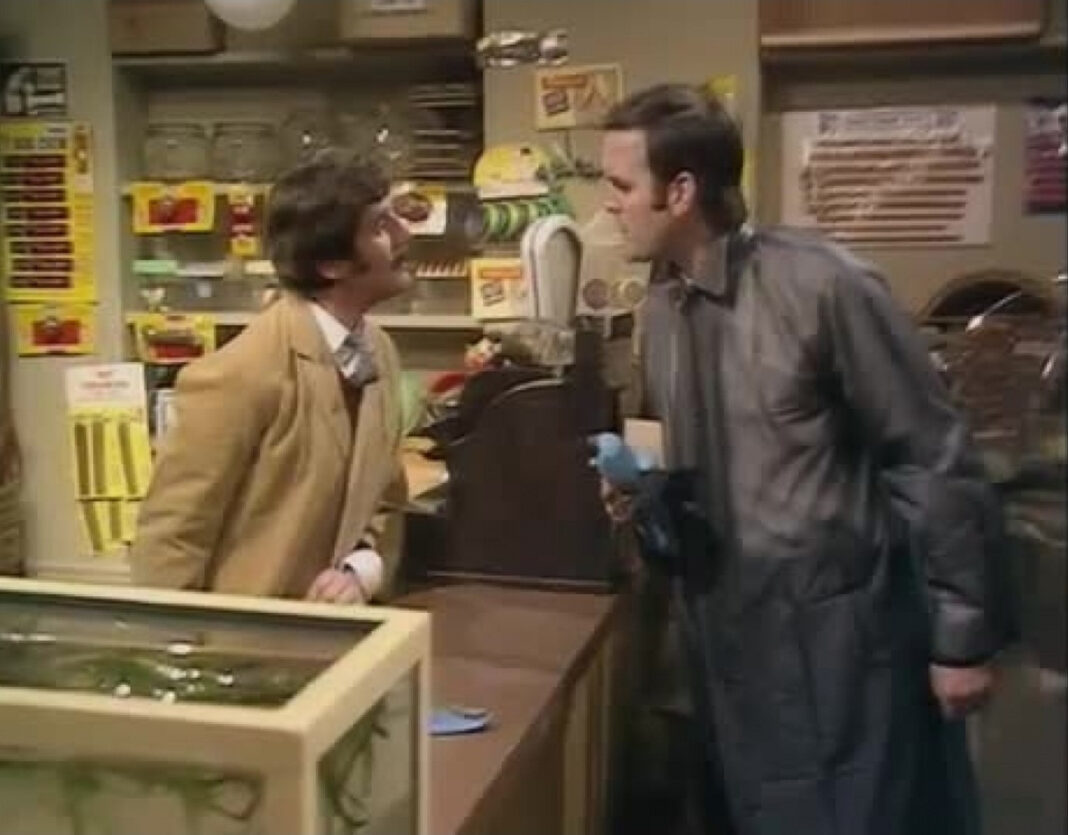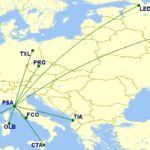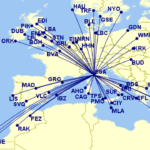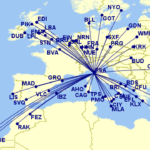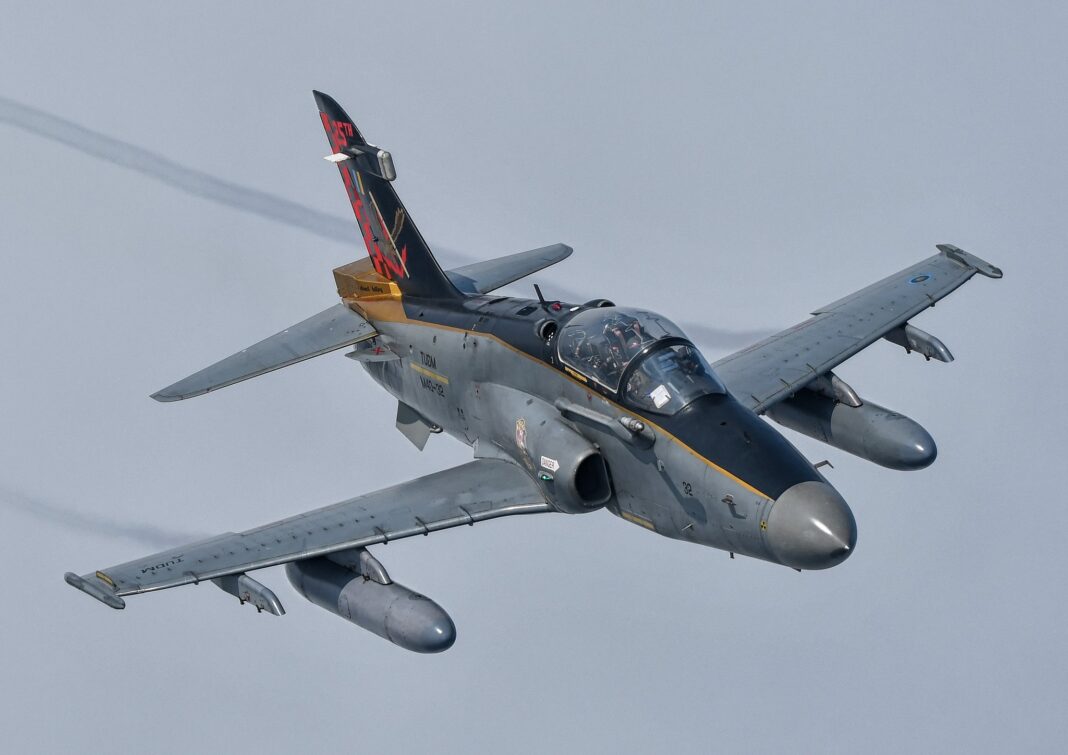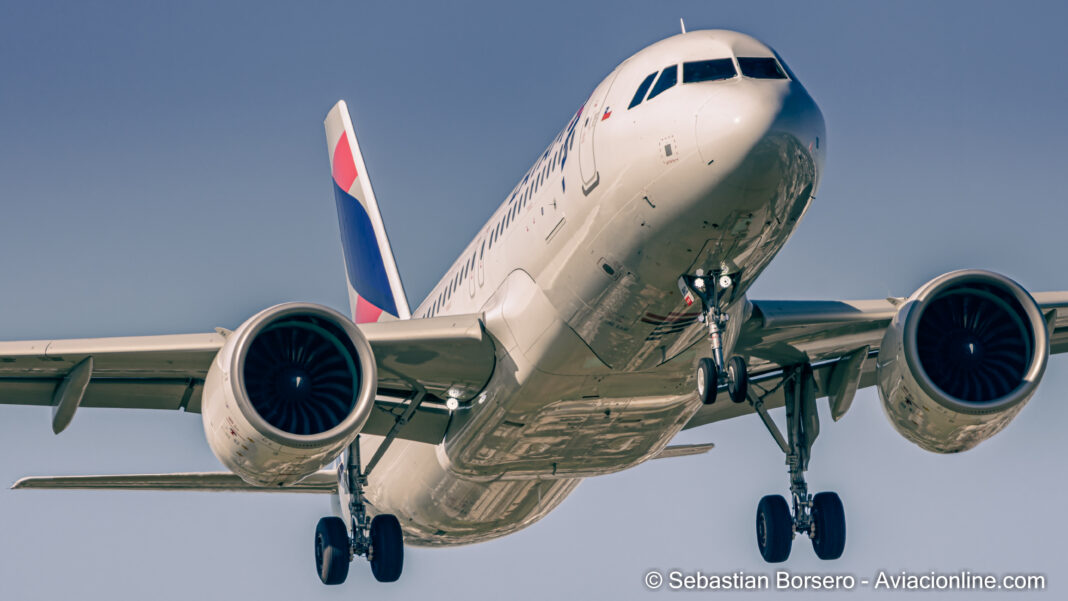As on Monty Python’s anthological Dead Parrot sketch, everyone thought Alitalia was effectively no more once its last Airbus A320 landed in Roma Fiumicino last weekend.
Almost at the same time, however, the news came that hours before Alitalia was bereft of life and Italia Trasporto Aereo – ITA – would take over, that the startup-slash-successor had sealed the deal; it would buy the naming and brand rights of Alitalia for EUR90 million.
Now, everyone thought, ITA had already secured the popular brand it had longed for months and months.
Much to surprise – or, for those who have been following Alitalia’s seven decades of very stable decision-making -, the following morning ITA announced it would be actually called ITA Airways, and that it had bought the Alitalia brand just to block any competitors’ attempts.
Yes, folks: the government’s startup had spent 90 million euros of its already restricted funds – the government was limited to inject up to EUR1.35 billion in the next three years – to buy a brand that had just gone bust the previous day… only not to use it.
Alitalia was the problem, not its business model
I spent this weekend roaming around the airports of Italy. I woke up at Pisa, where Alitalia abandoned its feeder operations into Fiumicino months before, headed to Cagliari with Ryanair, only to grab a flight with Alitalia – in its last day of operations – to Roma Fiumicino.
While anecdotical examples are often misleading, I think many times they can paint quite an accurate picture of what’s going on, and in my view, this time it was no different; a very stark and sharp overview of the changes inflicted in Italy’s industry over the last two decades.
To put it short: things have changed.
One thing that sometimes people don’t realize is that fantasized vision of air travel has long gone. People want the lowest possible fare, not an all-inclusive package; people don’t want a shitty package of crackers and a glass of water to go along with it; people just want to pay as little as possible and get where they want.
Does this say that there is no space for the likes of Air France, KLM and Lufthansa, those huge network carriers with massive hubs? Not at all; even though they were less profitable than Ryanair and Wizz pre-COVID, they were profitable, still.
The fact that out of the large network carriers, Alitalia was the only to be an eternal bottomless pit of money, therefore, speaks loads about Alitalia itself, not about the model the late airline followed.
Departing from Pisa: losing ground in important markets
I arrived very early in Pisa to hop on my flight to Cagliari – in these trunk-ish routes across Italy, Ryanair has some good timings and frequencies, and best of all, insanely good fares.
Because I had bought the ticket in advance, I had paid EUR10 for it. As a university student and therefore a massive penny-pincher, Ryanair caters especially to me – at this point, they’re basically my go-to airline; they have a quite large base in Pisa (my nearest airport) and flights to basically all major cities in Europe for this kind of fare, which means happiness.
If we investigate the capacity data at Pisa Airport gathered with Cirium’s Diio Mi, we see that, apparently, this strategy has worked quite well for Ryanair over the years.
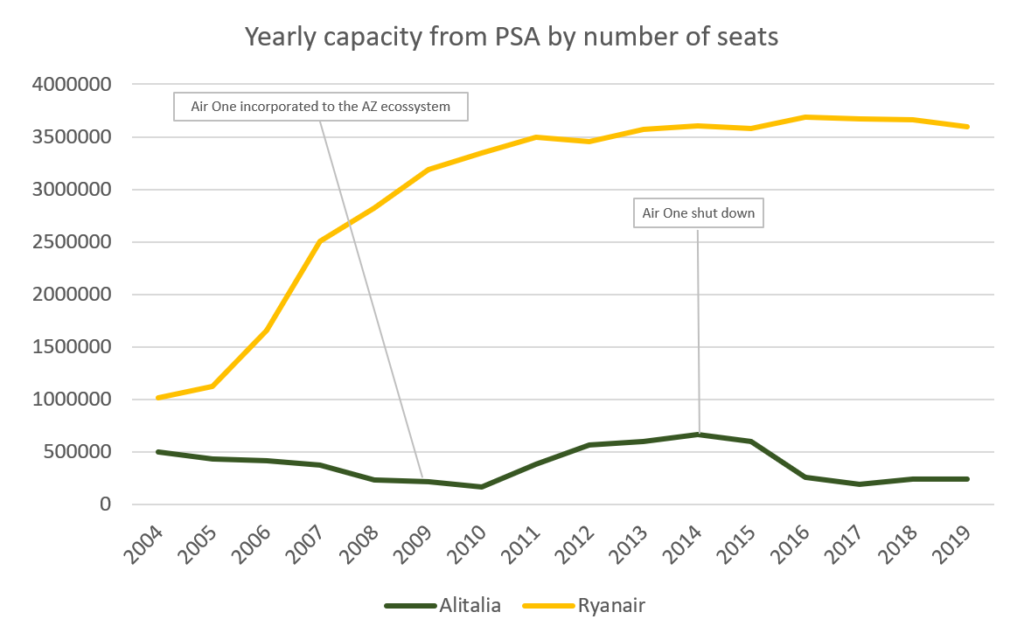
Alitalia, meanwhile, cannot say the same. From direct flights to trying out point-to-point with its Air One low-cost venture from 2009 to 2014, the airline shrunk its capacity in Tuscany’s most important gateway, resorting, pre-COVID, to connections to its hub in Fiumicino only.
The low-cost model absolutely shattered Alitalia’s customer base in Tuscany. But this is not to say that Italy is the only place on Earth where ULCCs threatened the dominant position of a legacy airline.
Take Germany, for instance; outside of its hubs in Frankfurt and Munich, Lufthansa Group retreated to a point where it deploys its low-cost carrier Eurowings everywhere else, with bases in Berlin, Cologne, Düsseldorf, Hamburg and Stuttgart – albeit the company was losing money long before COVID came along.
More successfully, IAG deploys non-hub, point-to-point flying in Spain and elsewhere with Vueling instead of Iberia. The same happens with Air France-KLM with Transavia in France and the Netherlands.
My point here is: there are precedents that, if not as successful as EasyJet or Ryanair, at least were way more successful than Alitalia ever was.
And it’s not only in Pisa that the pattern repeats itself.
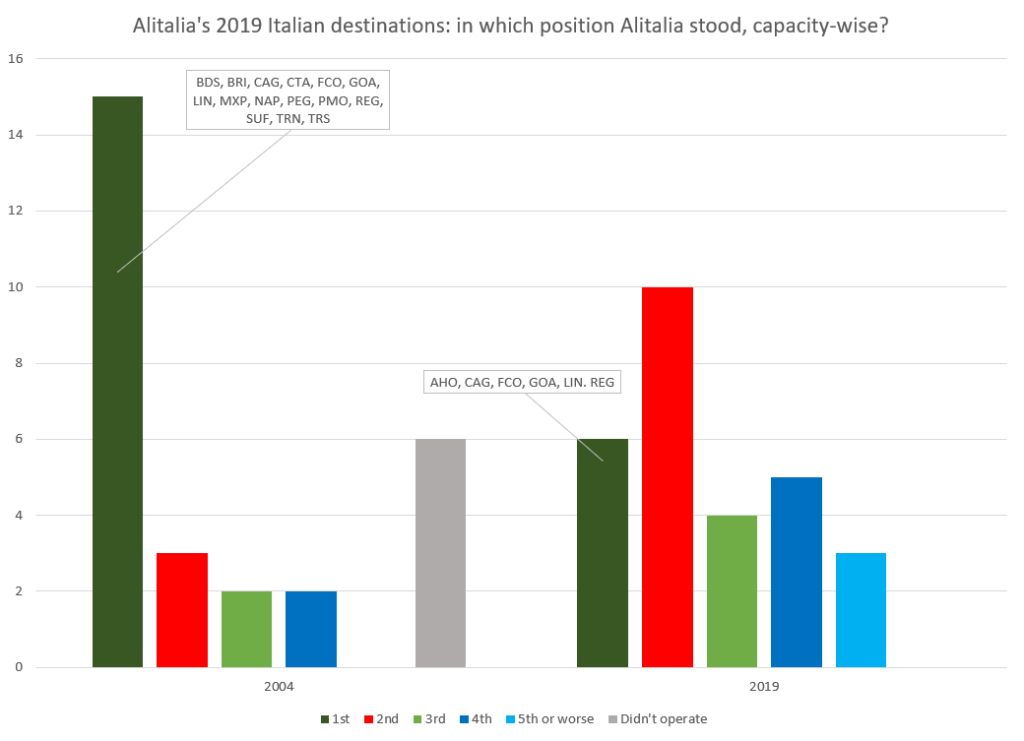
Of Alitalia’s 28 Italian destinations in 2019, Alitalia was the capacity leader in 15 in 2004; in 2019, it only led in six.
While leadership does not necessarily translate into financial success, it is symptomatic; it also shows that Alitalia, lately, was not half the man it used to be when it came to its footprint in the Italian market.
Connecting in Cagliari: a subsidy tale
I arrived in Cagliari, the capital of Sardinia, and the picture was quite different there.
While Alitalia was not in its full schedule in that last day of operations – though the other half of the September salaries had finally been paid that morning, many crew members refused to work -, the company had a relatively sizeable operation there, all to Rome/Fiumicino and Milan/Linate.
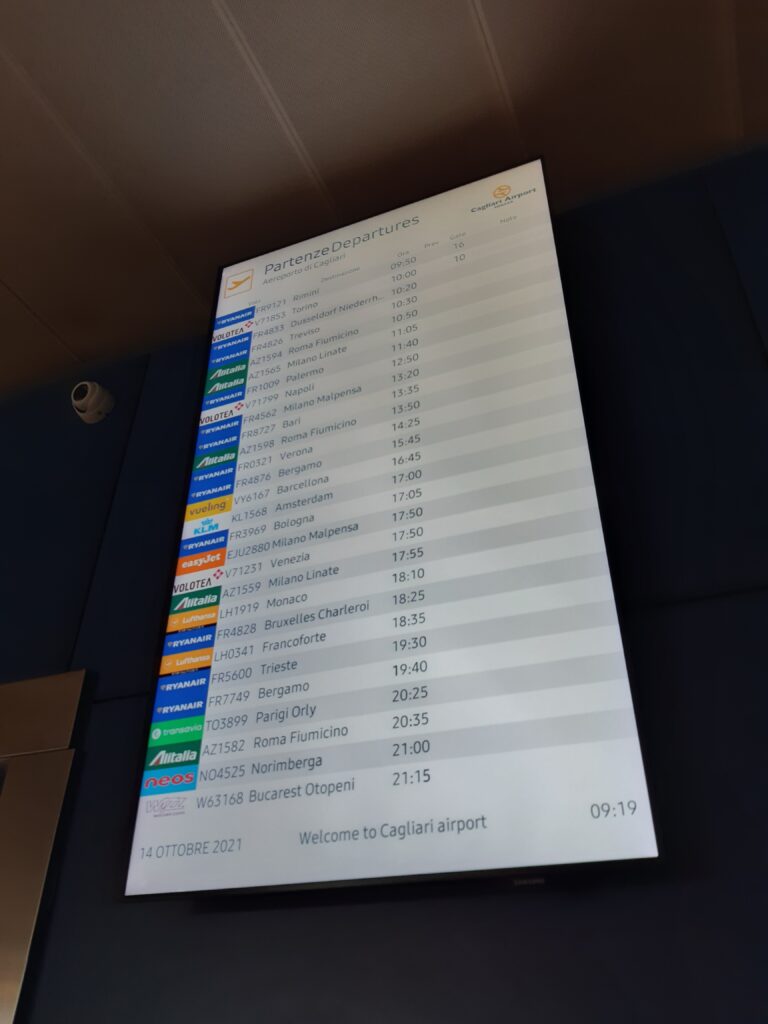
It was not a coincidence: Alitalia was the incumbent operator of the continuità territoriale contract, that subsidized flights from Alghero, Cagliari and Olbia to the two airports – in exchange for a fixed fare for residents. The succession of these connections was exhaustively covered by Aviacionline.
How operations between large cities in Italy were still subsidized in 2021 remains unseen; however, according to the Autonomous Region of Sardinia, the importance of this aid was to maintain reliability (reflected in a high number of frequencies) and predictability of fares for last-minute travelers that need to get to the mainland.
Evidently, this shows in the capacity numbers from Cagliari over the years.

Obviously, Ryanair has been calling this illegal state aid for years – despite the fact that almost any airline operating locally could enter the applications for the subsidized flights when they were run -, but none of the complaints were ever admitted.
In any case, this lifeline from Sardinia kept Alitalia’s presence going in Cagliari for years; not for nothing, the airport was one of the only six where the airline had the largest capacity in 2019 by number of seats.
Arriving in Fiumicino: depressing sights and a mourning feeling
Apparently Alitalia had booked – seriously – 190 people in the flight, the Airbus A320 being able to carry 180 only. As far as I had heard, some of the passengers were waiting for two days for a flight, given the recurring cancellations of the previous days.
Thankfully, though, I was cleared to go, as I had been assigned a standby place, and to Rome we went.
Now that was one of the crappiest flights I had ever been in, not because of the service or anything – the flight was OK as it should since it’s a very short hop -, but because of the atmosphere. I went to talk to the crew and discovered it was their last flight for Alitalia; all of them had more time in the company than I had of life, so it hit quite hard.
All of them opted not to join ITA, the government’s new airline startup, many complaining about the lower wages the new airline would pay – one flight attendant said the cut reached 40%.
But what all of them unanimously wanted to tell me was two things. One, that their sadness was not necessarily because of what was happening, but because of the way it was all handled over the years, and two, that they wanted people to understand it was not their fault.
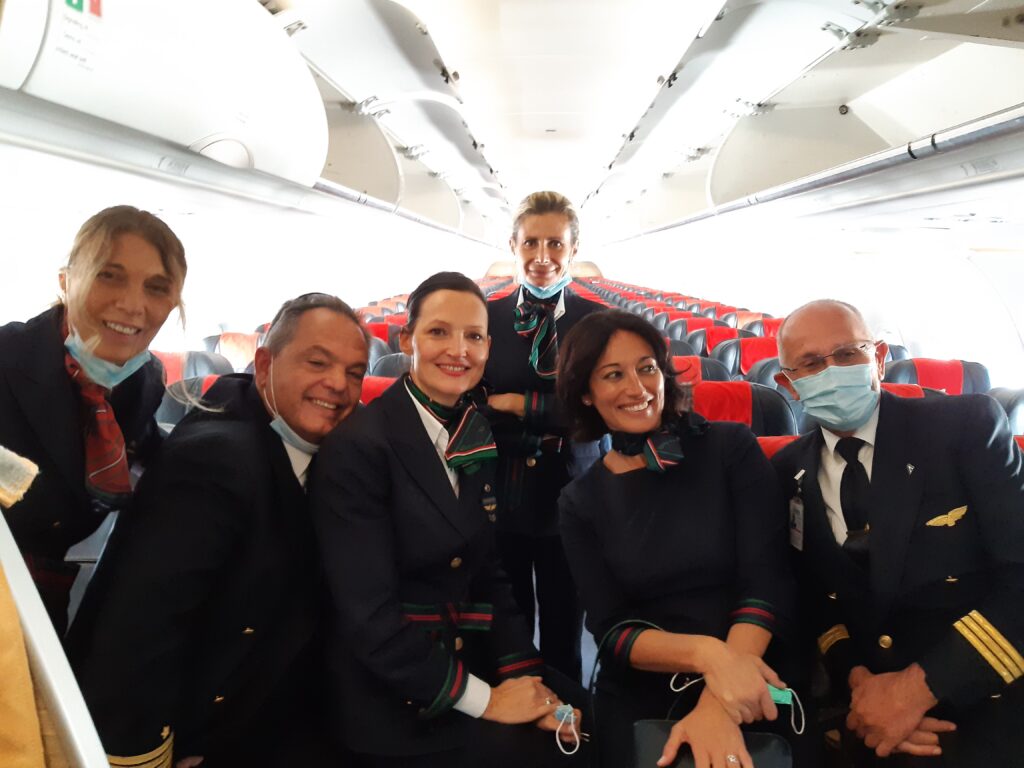
After those heartbreaking remarks, I took my seat as we descended to Fiumicino.
in Alitalia's last day of operations, FA Rita Anna contemplates the cabin in what is her last flight after 30 years working for the company.
the 152 pax offered a round of applause after landing, where the FA thanked them "for flying with us in our last day of life". pic.twitter.com/1Wt42PVy37
— João ☕ (@joaointhesky) October 14, 2021
We landed and the flight attendant thanked us for being with them on «their last day of life».
Now as you can imagine, Alitalia remained, by far, the largest operator in Fiumicino; nobody came even close.
As the years went by and the low-costs ate Alitalia’s presence elsewhere in Italy, Rome remained the airline’s safe fortress – and not for nothing, it is now ITA’s safe spot.
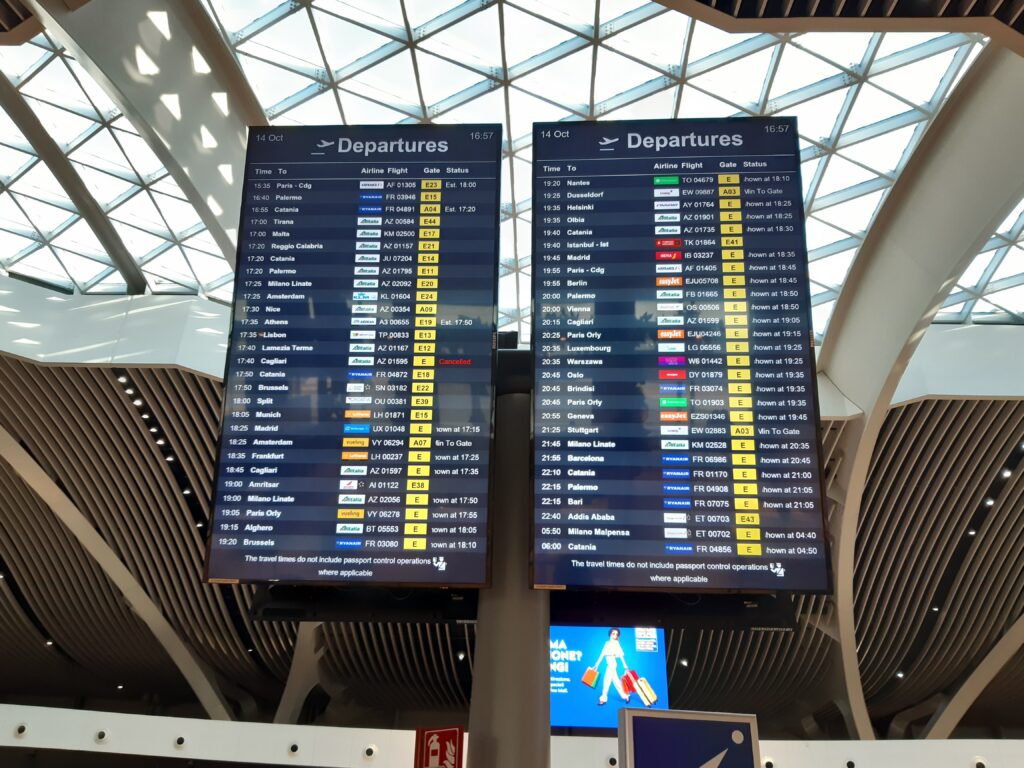
Even though the LCCs made some advances in the market over the years – Ryanair even going into Fiumicino from 2013 -, the second carrier by number of seats in 2019 considering Rome’s two airports (Ciampino and Fiumicino), Ryanair, offered just over 9 million seats. Alitalia? Over 22 million.
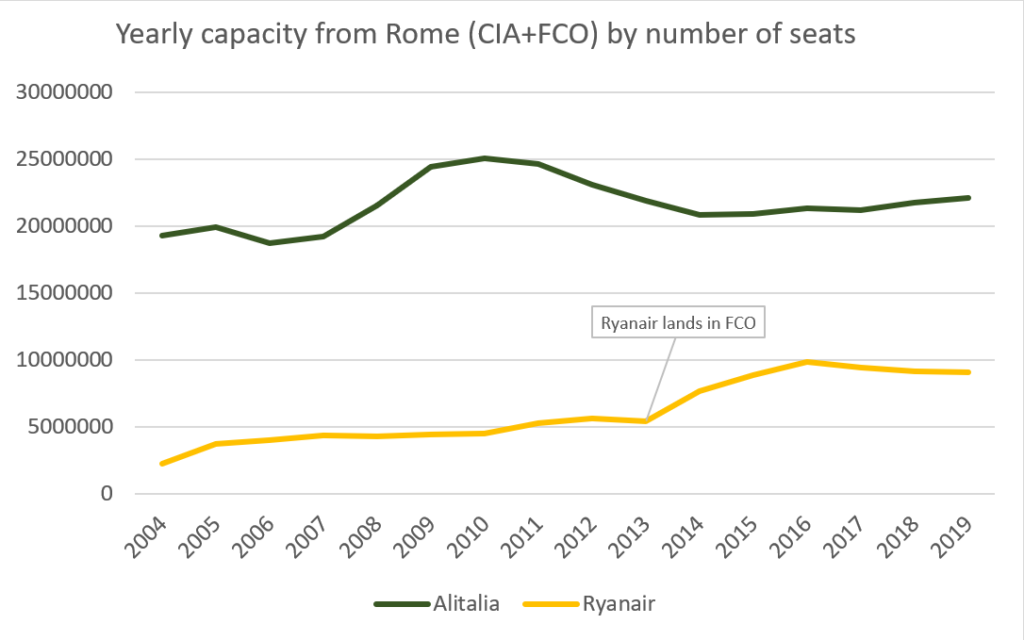
While this retreat towards a hub-and-spoke network showed Alitalia’s fragility, it also represented that the Rome market has no direct replacement if the airline went bust – something even Michael O’Leary said in a frank interview to Corriere della Sera in September.
The ultra low-cost long saw synergies in which it could feed Alitalia’s Fiumicino flights, something Alitalia repeatedly refused.
Could the story be different? Who knows.
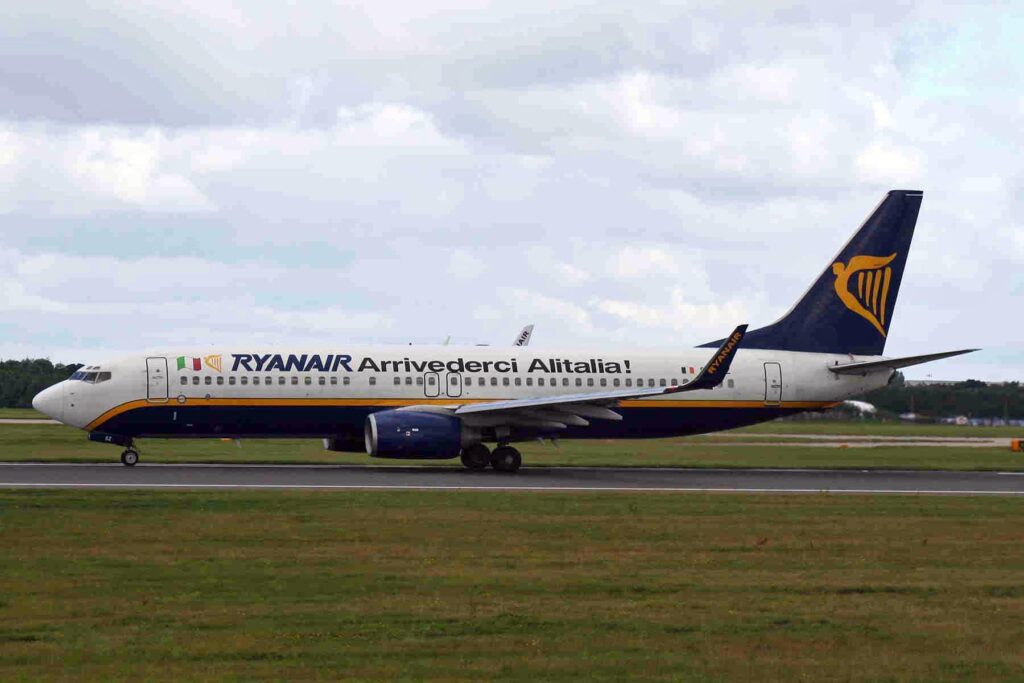
All in all, now it’s up to ITA to prove all its critics wrong – and unsurprisingly, the airline is doubling down on the hub-and-spoke strategy of Alitalia.
«Sure it convinces me [ITA’s industrial plan]!», said O’Leary in that very same interview to Corriere della Sera. «Their business plan points to finish in red, exactly how Alitalia’s been doing for 75 years. The challenge for ITA is hard: they’re bound to take over Alitalia’s employees and will pay them less, but the unions won’t allow it. They will have the same high operating costs in the airports, the same political interference.»
Let the dead parrot be a dead parrot
Now the first challenge for ITA to contradict those grime forecasts is simple: forget Alitalia, forget its idiosyncrasies; accept the fact that the dead parrot is a dead parrot.
There are reasons why Alitalia went bust after 75 years, and they are not few.
May the management of ITA accept the harsh reality. In a very insightful interview to Corriere della Sera this week, ITA’s President Alfredo Altavilla, tried to set the record straight.
Almost unbelievably, he said «there is a philosophical aspect and another operative» on why people should choose his airline. «I hope there’s a slice of Italians who want to play the match of the relaunch of operations of the flag carrier.»
He then said that the takeover of the Alitalia brand was «to assure an orderly transition towards the new livery», which is, so far, fair enough; but he added that the purchase was also in order to «allow the extraordinary management [of Alitalia] to pay its employees and to avoid it to end up in rival hands».
It is almost insane that precious 90 million euros of the new carrier went to support the payroll of a carrier that went bust. And it’s almost unbelievable that 90 million euros of taxpayer money were spent for a brand to be taken over by somebody – even though ITA commissioned Landor to design a strong brand for itself – that recognizes, as Altavilla told Corriere, «there had to be a discontinuity».
Alfredo Altavilla is a proven businessman who did not was chosen by accident by the Italian government. However, may he be more like John Cleese, who recognized the parrot was «deceased», and less than Michael Palin, who said the «remarkable» bird was only «resting».
E’s not pinin’! ‘E’s passed on! This parrot is no more! ‘E has ceased to be! ‘E’s expired and gone to meet its maker! ‘E’s a stiff! Bereft of life, ‘e rests in peace! If you hadn’t nailed ‘im to the perch ‘e’d be pushing up the daisies! ‘Is metabolic processes are now ‘istory! ‘E’s off the twig! ‘E’s kicked the bucket, ‘e’s shuffled off ‘is mortal coil, run down the curtain and joined the bleedin’ choir invisible!! THIS IS AN EX-PARROT!!
May we forget the ex-parrot; for the love of God, let’s leave Alitalia behind.


